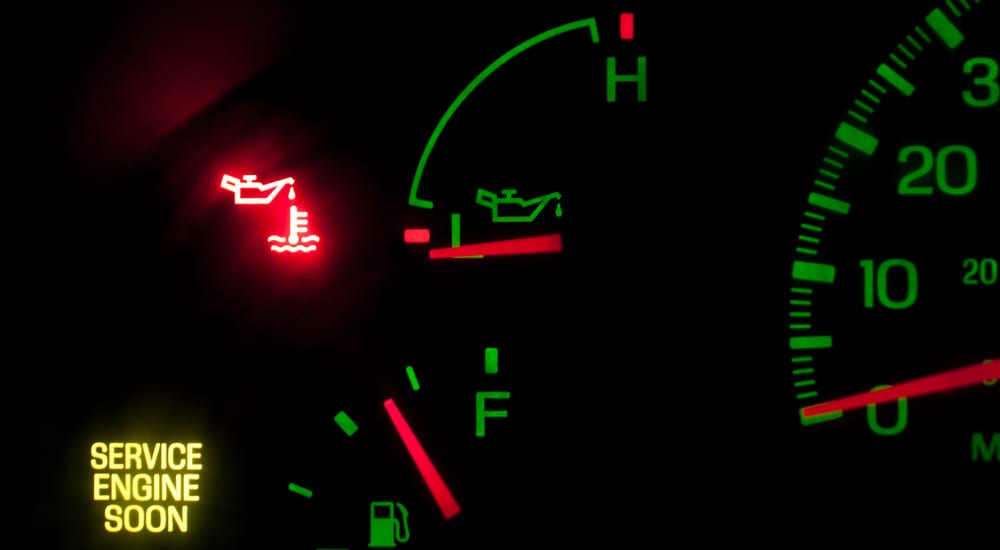Monitoring and properly changing the oil in your car is one of the simplest and most essential forms of car maintenance you can perform. Checking oil levels is easy and can show early warning signs of numerous issues that become very expensive if not fixed promptly. Getting a quick oil change at a dealer near you is much cheaper than replacing an engine. And yet, many people still do not fully understand the importance of oil in a vehicle’s engine and how to properly maintain that precious liquid.
For many of us, the ritual of checking and replacing oil in a car has been passed down from one generation to another over the last few decades. But misinformation and misunderstanding still run rampant among vehicle owners about when they should change the oil in their vehicle and what oil to use. It’s time to shed some light on this subject and make sure every car owner knows how to keep their vehicle healthy.
Oil in an Engine
Motor oil plays a very important role within the engine of a vehicle, which is why it is so important to get a quick oil change from your local dealer from time to time. To put it simply, there are many moving parts within an engine that shift while generating power for a vehicle. This movement creates the potential for friction as parts rub against each other, which then creates heat within an engine.
This heat is a waste of energy that could otherwise be used by the engine, and high temperature can also potentially cause damage to the engine itself. At the same time, friction can cause parts of an engine to damage each other as they rub against one another. Motor oil acts as a lubricant within the engine to reduce friction and keep all these parts moving without damaging each other. Low friction from oil also reduces the amount of energy that is wasted in the system as heat – so motor oil not only helps prevent damage to an engine, it makes it work more efficiently.
When to Get an Oil Change
Knowing when it’s time to get a quick oil change is surprisingly simple, but also too-often complicated by antiquated mindsets or bad advice. The old adage used to be that you should change your oil every three months or every 3,000 miles, whichever came first. That may have been true, or at least true enough, 50 years ago, but now it’s just inaccurate and ultimately wasteful.
Most vehicles now are designed to run much longer than that without an oil change – and oil itself has been designed to be much more efficient and last longer. Many vehicles can go six months without an oil change, and some can even go a full year – usually 6,000 or even 10,000 miles without the need for new oil. You can’t use the type of oil as a gauge, however, because it all depends on the engine itself – so two engines that use the same type of oil might need to have it changed at different intervals.
There are two ways to tell when to get an oil change: check your oil and read your manual. You should regularly, about once a month, check the oil level in your vehicle’s engine. This can be done either with a manual dipstick or through an automatic readout, depending on your vehicle. Assuming you have sufficient oil, check your vehicle’s owner’s manual to see how often your oil should be changed. No one knows better than the manufacturer in this regard, so the manual can tell you exactly how often to change your oil.
Why You Need to Change Your Oil
The simplest reason to get a quick oil change for your vehicle is that oil becomes contaminated over time just due to regular use. In general, when oil is drained from a vehicle, it is not actually disposed of – it can be “cleaned” and recycled for use later on. If you prefer to perform oil changes yourself, you should take your used oil in a container to a mechanic or other local business that will recycle the oil, so that it does not end up in a local water supply or soil.
Motor oil becomes less effective over time due to different types of dirt and build-up in the oil, which is why a quick oil change is necessary even if you are not driving a lot. In fact, if you don’t drive very often or only for short periods of time, your oil might not get up to a high temperature to do its job as well as possible. This makes a good oil change even more important. When your oil is drained, any impurities that can indicate a bigger problem, such as metal shavings or coolant in the oil, can also be detected to prevent damage to the engine.
Where to Get a Quick Oil Change Near You
Knowing when to get your oil changed is only part of the equation; you also need to know where to take your vehicle. There are a lot of businesses that specialize in quick oil changes, but dealerships are among the best places to go for maintenance and upkeep of a vehicle. A large dealership usually has a good maintenance crew on site that specializes in the manufacturers and models that are sold there. If you have a Chevy, for example, taking it to a Chevrolet dealership can be a great choice since the mechanics there have a ton of experience with Chevy’s just due to their daily work environment.
When you can’t get to a dealership, then be sure to ask questions of the staff at any repair or lube shop you take your car to before getting a quick oil change. Ask them how often you should get your oil change: if they tell you the standard “3 months, or 3,000 miles” answer, then consider going elsewhere. You want to find mechanics who know your vehicle well enough to give you a correct answer, or who will ask you to wait a moment while they check a manual or similar resource to find the right answer for your vehicle.
The Simple Solution – Read Your Manual
Whenever you are dealing with issues with your vehicle, whether it’s when to get a quick oil change or what tires to purchase, the best answer is typically to go to your owner’s manual. I know reading a vehicle owner’s manual is not the most interesting thing you can imagine, but the information in there is invaluable. Would you prefer to waste $200 a year on unnecessary oil changes, or spend 15 minutes looking through your manual to see how often you need to change your oil?
Your owner’s manual can also indicate how to check your oil – since not all engines work the same way – and how often to change your oil filter. You can also find out what type of oil you should use, since synthetic is not always the right choice, and learn about other forms of routine maintenance you should be performing on your vehicle. By regularly checking your tire pressure, depth of tire tread, and fullness of other vehicle fluids, you can avoid costly accidents or part failure.





